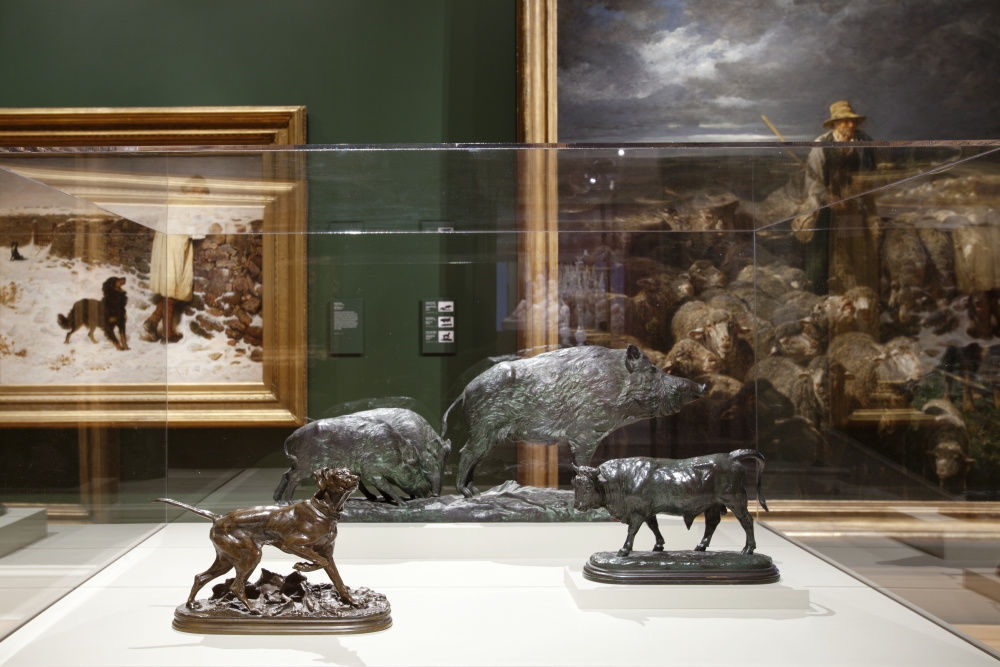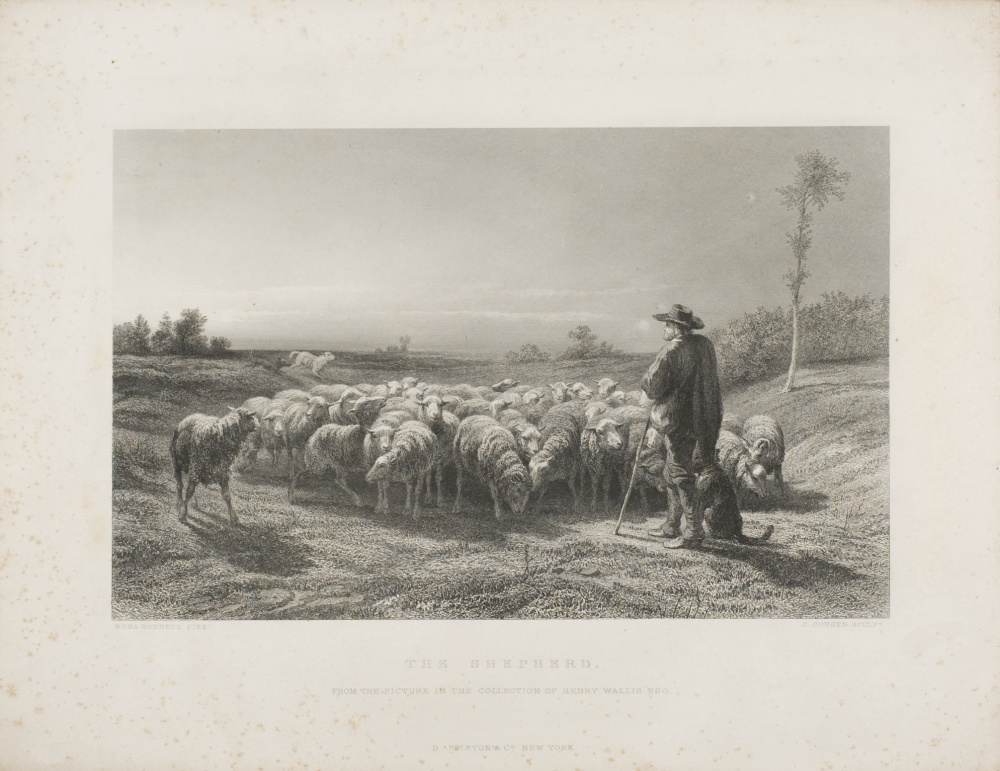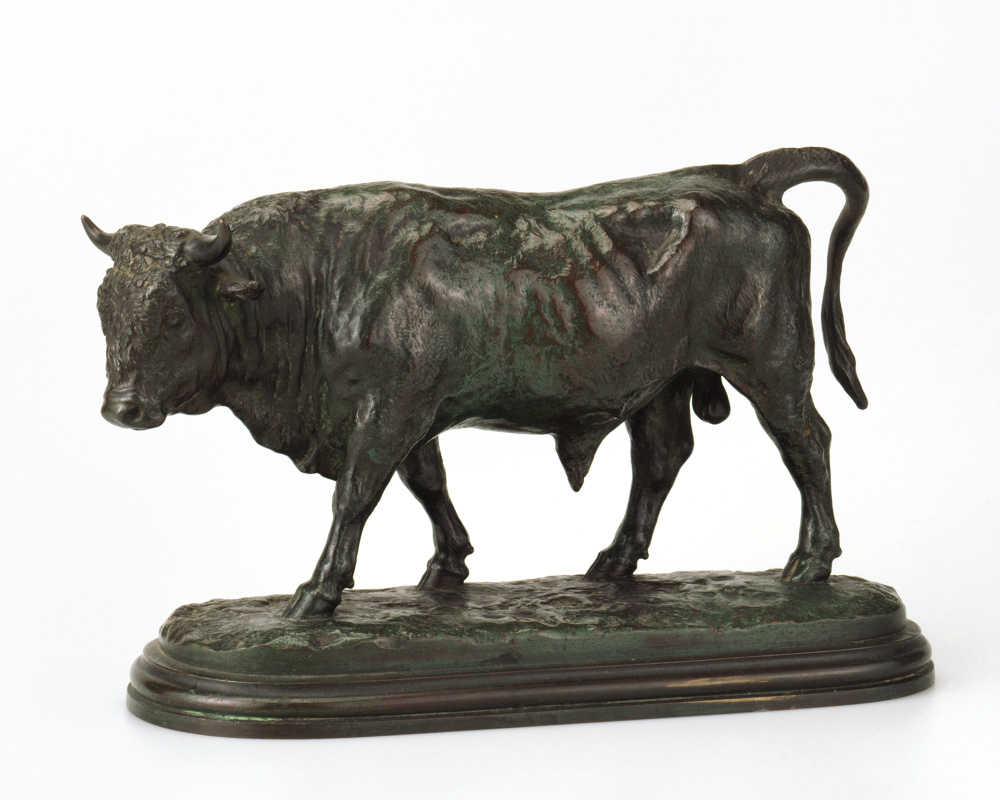- Open today, noon to 5 pm.
- Parking & Directions
- Free Admission
Rosa Bonheur: Boundary Breaker
–Bobbie Gribble, Museum Docent

The Rural Ideal, European Art 19th Century, Gallery 215, 2014
Tucked away in a glass case in Gallery 215 among other bronze pieces is a small bull by Rosa Bonheur. It’s one of three objects in the Chrysler’s collection by one of the nineteenth century’s most famous woman artists. Though her work was conventional, her lifestyle was far from it. She smoked in public; lived with her partner Natalie Micas for forty years; hunted, something most women were shunned for during that time; and even got police permission to wear men’s clothes. “I was forced to recognize that the clothing of my sex was a constant bother. This is why I solicited the authorization to wear men’s clothing from the prefect of police. But the suit I wear is my work attire, and nothing else. The epithets of imbeciles have never bothered me,[1]” she said.
Animals were at the center of Bonheur’s work and show up in all her objects in the Chrysler’s collection, including The Shepherd, a black and white engraving that features a shepherd with a flock of sheep, and a pencil drawing of a cow. A painter and sculptor, Bonheur portrayed animals in a realist style. Instead of leaning on academic training, she taught herself. She started by watching her parents. Her mother taught her the alphabet by drawing animals for each letter. Her father, also an artist, brought live animals to his studio so that he could study them and paint them accurately. Bonheur often watched him work.

Rosa Bonheur (French, 1822–1899), D. Appleton & Co., Publisher, The Shepherd, 19th century, Engraving, 0.299
At fourteen, Bonheur went to the Louvre to copy paintings of animals. She also studied animal anatomy in the city’s slaughterhouses and even dissected animals at the National Veterinary Institute so she could understand how to best paint and sculpt them.
Bonheur’s most famous paintings were Ploughing in the Nevers, in the collection of Musée d’Orsay, and The Horse Fair, which debuted at the Paris Salon in 1853 and was gifted to the Metropolitan Museum of Art in 1887 by Cornelius Vanderbilt. She was adored by Queen Victoria and once enjoyed a visit from Empress Eugenie, who made a special trip to award her the Legion of Honor. A confident woman and artist not to be restricted by societal norms and expectations of her time, Rosa Bonheur paved the way for other women artists, many of whom have works on view in the Chrysler’s galleries.
Celebrate the Birthday of Rosa Bonheur!
On Tuesday, March 16 from 5:30 to 6:30 p.m., join the staff of the National Museum of Women in the Arts for a virtual happy hour to celebrate Rosa Bonheur‘s birthday! We will make a specialty cocktail in her honor, share artworks and stories, and explore the museum’s collection and archives for all things Rosa.
[1] “Rosa Bonheur – Biography, Quotations & Art – The Art History Archive,” Rosa Bonheur – Biography, Quotations & Art – The Art History Archive, accessed March 4, 2021, http://www.arthistoryarchive.com/arthistory/realism/Rosa-Bonheur.html.


